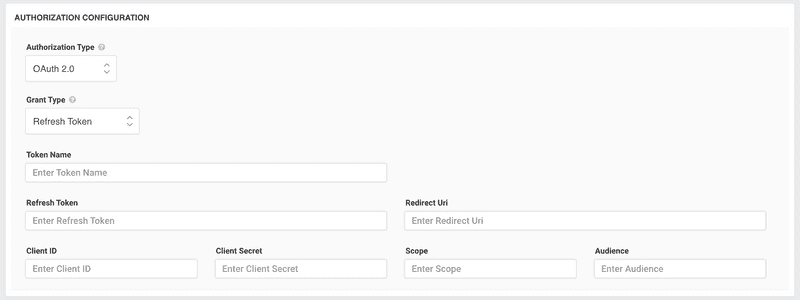Refresh Token Grant Type in OAuth 2.0
The Refresh Token Grant Type is used when an application wants to obtain a new access token without requiring the user to authenticate again. This is particularly useful for scenarios where access tokens have a short lifespan and the application needs to access the user’s resources without their intervention repeatedly. A refresh token is typically obtained along with the access token and can be used to get a new access token when the current one expires.

How It Works
- Obtaining the Refresh Token:
- Initially, when the user authenticates, alongside the access token, a refresh token is also provided by the authorization server. The refresh token usually has a longer lifespan than the access token.
- Using the Refresh Token:
- When the access token expires, instead of prompting the user to authenticate again, the client application can send a request to the authorization server using the refresh token to get a new access token.
Configuring the Refresh Token Grant
- Register Your Application:
- Start by registering your application with the OAuth 2.0 provider. Ensure that you select the right scopes and grant types, which will typically include the
authorization_codegrant type.
- Initial Token Request:
- After user authentication, when your application requests an access token using the
authorization_codegrant, the response will include both an access token and a refresh token if the server supports and is configured to provide refresh tokens.
- Request a New Access Token:
- When the access token expires, send a POST request to the token endpoint of the authorization server. This request should include the
grant_typeparameter set to "refresh_token", therefresh_tokenreceived earlier, and may also require client credentials depending on the server's configuration.
- Handle the Token Response:
- The server will respond with a new access token, and possibly a new refresh token. Update the stored tokens in your application and use the new access token for subsequent requests.
Points to Consider
Token Lifespan: While refresh tokens typically have a longer lifespan than access tokens, they are not eternal. Some servers may expire them, and others might issue a new refresh token with every access token refresh request.
Security: Refresh tokens are powerful since they allow for the generation of new access tokens. Store them securely, and consider using mechanisms like rotating refresh tokens (where the server issues a new one with each use) to enhance security.
Reauthentication: If the refresh token expires or is revoked, the user will need to authenticate again. Ensure your application gracefully handles such scenarios.
Conclusion
The Refresh Token Grant Type is an essential feature of OAuth 2.0 that helps improve user experience by seamlessly renewing access tokens. Developers, however, need to ensure the secure handling and storage of refresh tokens to protect users' resources and data.